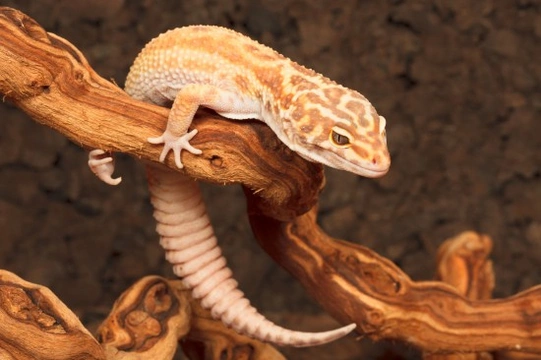Pets
Pets for studWanted petsBreedersAccessories & services
Knowledge hub
Support
Support & safety portal
Geckos and their natural defences
The Gecko comes in many different varieties, but as a whole, they are among the smallest of the pet lizard species that you might see available to buy and keep domestically. In the wild, this makes them natural prey for a lot of larger and more aggressive animals, including (but not limited to) birds, snakes, frogs, and even other lizards. In order to allow the gecko as a species to thrive and survive, they have developed a range of defensive mechanisms to help to protect themselves against animals that are apt to see them as a delicious snack, and have an impressive armoury of skills at their disposal.
In this article, we will look at some of the ways that the gecko uses their natural defences to keep themselves safe, which you may also see displayed by your domestic pet gecko. Read on to learn more!
Run, run away!
As a small animal without many very impressive defences against larger, better equipped predators, the gecko’s first line of defence is to avoid trouble altogether. This means that if they spot a potential predator or an unsafe situation before they are up in the thick of it, their first response will be to retreat carefully, while avoiding drawing attention to themselves.
Utilising all of their senses
The gecko has very highly evolved senses of hearing, eyesight and smell, all of which prove useful for a great many things. Firstly they assist the gecko in finding prey of their own, and allow them to keep themselves well fed!
But the senses of the gecko and also their hyper-alertness when on the move means that they will often be able to get a head start in spotting a problem or hearing or scenting the approach of one of their own predators, giving them time to decide how to react to it. This gives the gecko the opportunity to either scuttle off as fast as their legs will carry them, or to make themselves look small and blend into their surroundings to avoid detection. What line of defence the gecko takes in any given situation will vary from case to case, depending on what they assess will give them the best chance of survival.
Dropping their tails
The famous detachable tail trick is something that the gecko is well known for, and is an incredibly interesting and well evolved defence mechanism. This trick comes in useful when a predator catches hold of the gecko by the tail; the gecko can literally part it from its body with only minimal loss of blood. After detachment, the nerves within the tail mean that it will still twitch and move slightly for a minute or two, often convincing the predator that they still have hold of their prey. During this time while the predator in question is diverted, the gecko can either play dead and wait for the predator to retreat, hopefully without spotting them, or make a run for it and hope that their predator does not spot their departure.
After losing their tail, the gecko’s body will naturally regenerate a new one over time, meaning that the gecko can use dropping their tail as a line of defence time and time again.
Camouflage
Like many lizards, the skin, scales and general appearance of the gecko allows them to mimic their natural environments, providing a natural camouflage that permits them to blend into the background and avoid being seen. In some environments, picking a gecko out from the background foliage is incredibly challenging, meaning that their potential prey will be hard-pressed to locate them, even if they know that the gecko is there.
Some geckos are much better at blending in than others; one of the best camouflage experts is the interestingly-named Satanic leaf-tailed gecko of Madagascar, which can appear in a range of colours from brown to orange to green, depending on the colour scheme that they are seeking to match!
Fighting back with the teeth!
Geckos are not among the quickest of the lizard species to bite, although some are more free with their teeth than others! Biting forms one of the last lines of defence for the gecko against threats, as by the time that they actively have to fight back, they are likely to be in deep trouble already!
Within the domestic environment, some geckos will nip or bite if handled, as they may potentially see you as a threat to them. This is very much species-dependent, again; for instance, the bright and colourful Tokay gecko is apt to snap at fingers without much invitation, while the popular pet Leopard gecko is very calm and not so prone to biting when handled. This is one of the reasons behind why they are such popular pets, and often recommended for the first time gecko keeper.



